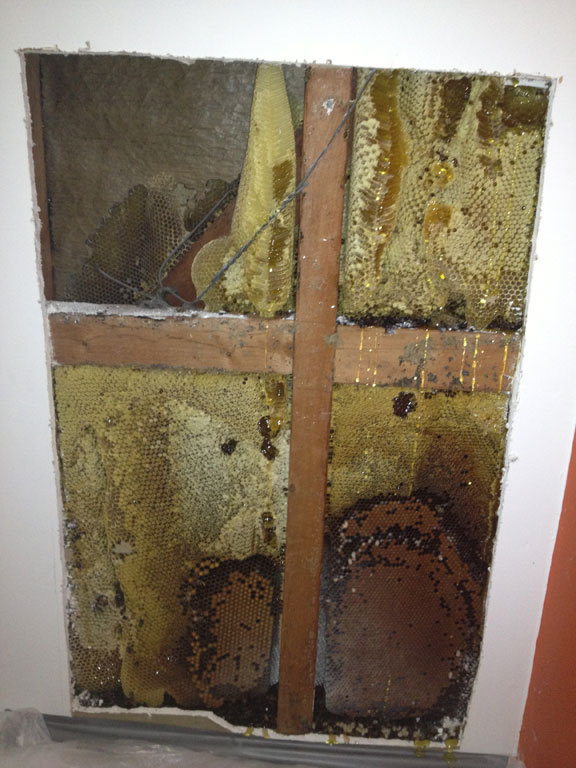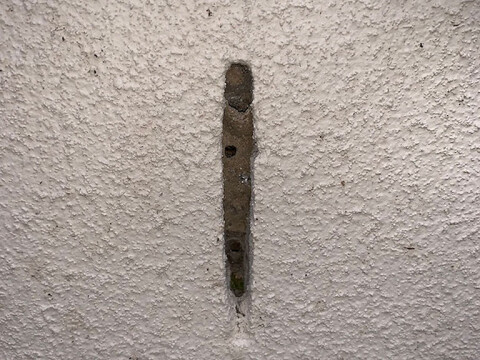Having a bee or wasp nest in the walls of your home is surprisingly common. After all, the wall cavities of your home are dry, warm and protected from predators, so an ideal place for bees and wasps to build a nest. However, if you’re the homeowner it can be more than annoying – apart from the noise and potential safety issue from their stings, they can cause significant damage to your home.
Before we discuss how to prevent bees and wasps nesting in your walls, let’s review the common wasps and bees that build nests in wall cavities, how they enter your home and the damage they cause…
European honey bees
Although European honey bees are an invasive insect, they are generally viewed as beneficial. Although they are widespread across Australia, generally cultivated by bee keepers but there are lots of wild honeybees. Typically they will build their nests in trees and bushes, but roof voids and wall cavities are ideal alternatives. Although they are generally quite placid insects, their stings are quite painful and can be a significant concern to those who are allergic to bees stings.
Honeybees will access the inside of building through natural gaps in the construction, including weep holes, but also unplanned gaps, such as holes around windows or cracks in the brickwork.
The main damage caused by honey bees is through their honey, which can impact wall materials and also attract other pests.
Mortar bees
Mortar or mason bees have got their name through their habit of being able to dig out the mortar between bricks to access the wall cavity (although they will use any ready-made gaps such as weepholes).
In severe attacks, their activity can loosen brickwork. However, they are not considered a safety threat to humans as they are a solitary bee – they do not build nests of multiple individuals, but simply access the wall cavity as a place to lay their eggs. Typically they target walls which get a lot of sun to keep their young warm.
European wasps
European wasps are an invasive pest and are only found in the temperate areas of Australia, generally to the south of a line between Perth on the west coast and the Hunter Valley on the east coast. Their nests can grow very large, sometimes over 100,000 individuals. They are a dangerous, aggressive paper wasp that can attack, delivering multiple stings. Although 80% of European wasp nests are generally underground (for example in a hollow in an embankment), they will nest in roof voids and sometimes wall cavities.
Typically they will enter through natural construction gaps under the eaves, but will access the roof void through any hole in the walls – including gaps around windows and door, as well as weep holes.
Although they generally don’t do much damage, they do represent a significant safety threat.
Native paper wasps
There are a variety of native paper wasp species found across Australia. Their nests are much smaller than the European paper wasps and although they also deliver a painful sting, they are generally less aggressive.
Native paper wasp typically don’t nest inside walls or roof voids, preferring to build their nests in sheltered areas on the outside of buildings, such as under the eaves.
Mud dauber wasps
Mud dauber or potter wasps which are found across Australia create a specific but significant problem with their nesting habits. Their nests are temporary and are built solely as a nursery for their young. They build mud capsules into which their place a paralysed spider or caterpillar as food for their larvae. They require a surface on which to build their nests and locations which provide additional structural support for their nests, such as the edge between walls and ceiling, or in the corners of rooms, are ideal.
Mud dauber and potter wasps will typically building their nests under eaves, but occasionally in outbuildings or roof voids. However, weep holes are also a preferred location as they provide good support for the mud cells.
Whilst they generally cause little direct damage, by blocking up the weep holes they prevent the weep hole from doing its job – allowing good ventilation and moisture to escape. If they block up several weep holes in the same section of wall this can start to cause problems with moisture in the wall cavities and potential decay of wood elements.
Installation of stainless steel Weepa Protector Weep Hole Screens will discourage mud dauber wasps from building their nests in weep holes.


